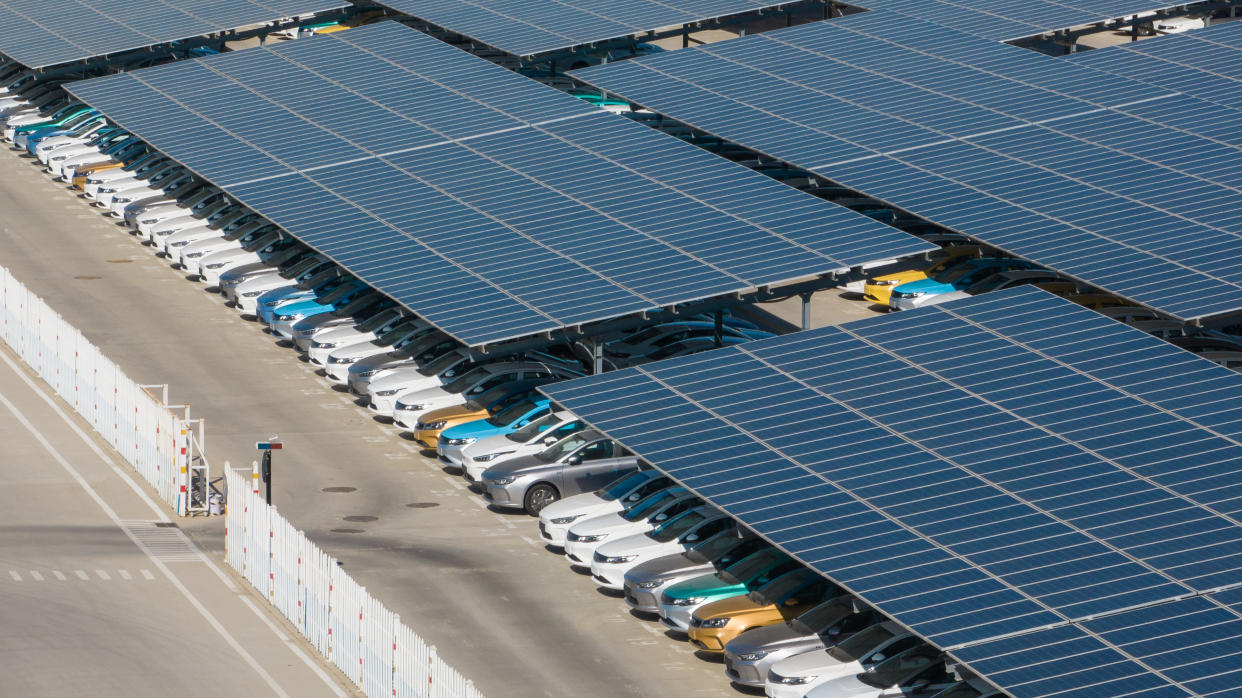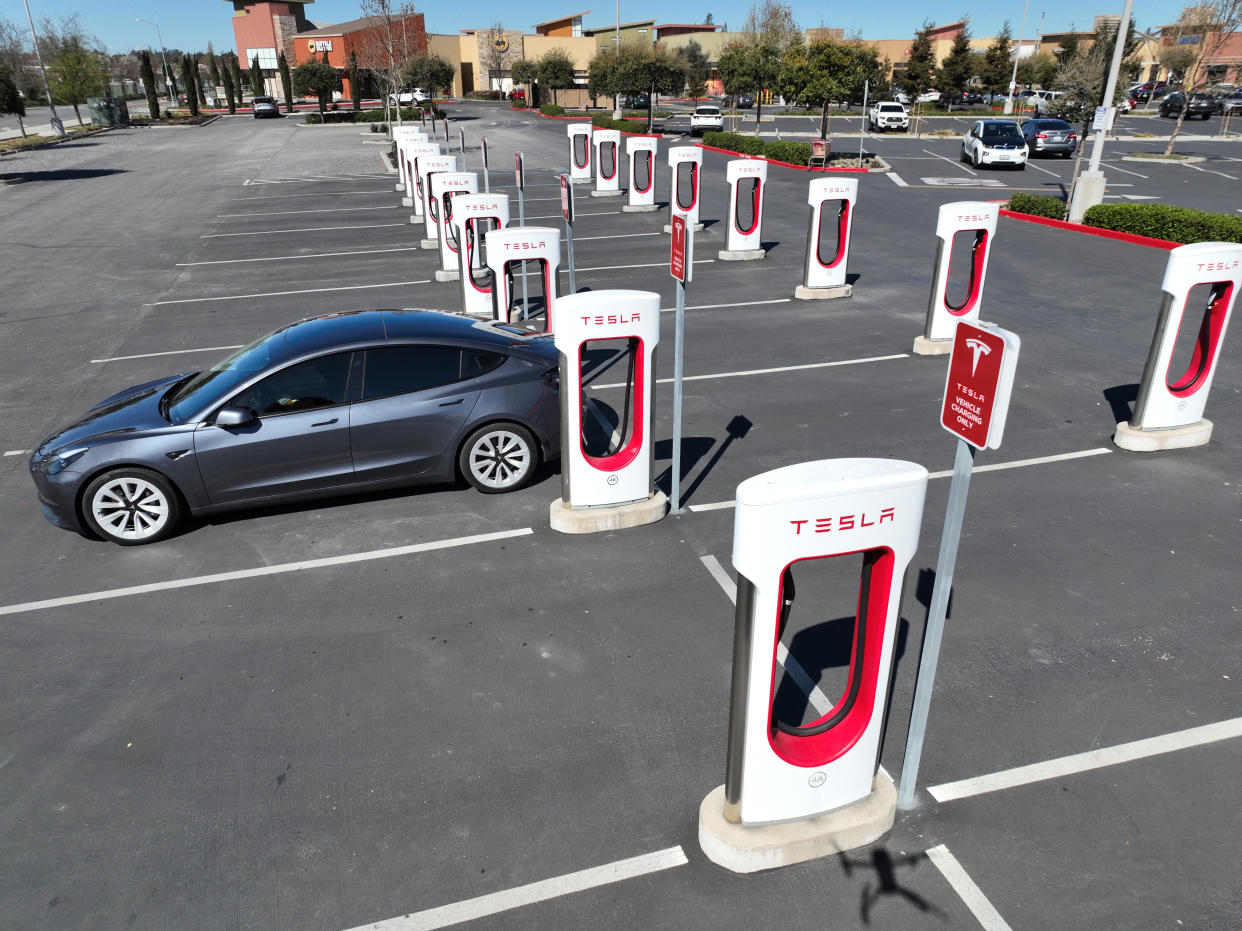Electric vehicle sales poised for rapid growth, despite Inflation Reduction Act limitations
Electric vehicle sales are swiftly rising in the United States, and the recently passed Inflation Reduction Act, which offers subsidies to consumers, is expected to boost them even further.
“Since I took office, electric vehicle sales have tripled,” President Biden recently boasted on Twitter. “Every electric vehicle sold is a win against climate change.”
There were 70,871 electric vehicles — both fully electric and plug-in hybrids — sold in the United States in August, a 43% increase from August 2021, according to the U.S. Department of Energy. EVs accounted for 6.28% of total light-duty vehicle sales last month.
That development owes more to high gasoline prices than any specific Biden administration policy, but the president has been eager to claim credit nonetheless. “Since President Biden took office, companies have invested nearly $85 billion in manufacturing of electric vehicles, batteries, and EV chargers in the United States,” the White House said earlier this month.

The administration has indeed worked with Congress to pass some investments in EVs and their related infrastructure that will help the industry expand. The Infrastructure Investment and Jobs Act of 2021 included $7.5 billion for a network of 500,000 EV chargers, $7 billion for securing critical minerals for domestic manufacturers of the batteries that EVs need and $10 billion in subsidies for jurisdictions buying electric public buses and school buses.
The Inflation Reduction Act (IRA), which Biden signed into law last month, extends the light-duty electric vehicle tax credit of up to $7,500 through 2032 and seeks to dramatically expand EV adoption.
Some analysts believe those subsidies will turbocharge EV adoption. Garrett Fitzgerald, senior director of electrification at the Smart Electric Power Alliance, a nonprofit that researches the future of energy and has hundreds of utility companies among its members, told Yahoo News that the IRA will boost EV deployment because it will improve affordability and catalyze the domestic industry to meet that demand.
“The Inflation Reduction Act will have kind of an accelerating impact on EV market growth,” Fitzgerald said. “The tax credit itself decreases some of the pricing issues that we’ve seen with electric vehicles being at a higher price point. But I think, more importantly, the IRA’s focus on electric transportation has demonstrated a commitment to this transition, and the auto [original equipment manufacturers] and the EV charging companies and providers are then really jumping in feet-first to this transition.”
Fitzgerald thinks the share of new car sales that are EVs could double again in the next year, meaning the U.S. could reach 10% in 2023.

But to satisfy demands from Sen. Joe Manchin, D-W.Va., provisions were tucked into the legislation that limited the credits to cars manufactured in North America.
Depending on how quickly U.S. capacity for mineral mining, processing and EV manufacturing expands, that restriction could undermine the law’s transformative potential to reduce the greenhouse gas emissions that are causing climate change.
“I don’t think the IRA is going to have an immediate, near-term impact on EV adoption,” Robbie Orvis, senior director of modeling and analysis at Energy Innovation, a think tank, told Yahoo News. “Some of the more popular models are not going to qualify for the credits in the next two years.”
As of 2024, eligibility for half of the tax credit will be based not just on whether final assembly occurred in North America, but also on whether a portion of the battery was made here too. That threshold starts at more than 40% of the battery components in 2023 and goes up by 10% each year until it reaches 80% in 2027. In other words, to get a tax credit of $3,750, a consumer next year would need to buy an EV that was assembled in North America and that had 41% or more of its battery components made there as well.
Starting in 2025, the IRA also stipulates, any electric car with “critical minerals” produced by “foreign entities of concern” are disqualified from receiving the tax credit.
“Foreign entities of concern” refers to companies in hostile countries such as Russia and China. The problem is that China currently has a majority of the world’s capacity for processing some of the “critical minerals” in EV batteries, such as cobalt and lithium.

“The intent is to build a domestic U.S. supply chain for EVs and all their components,” Orvis said. “Based on today’s trends on where the minerals are processed, [the IRA’s requirement] is an extremely high bar to meet. It doesn’t mean that over a decade we couldn’t see a big shift to processed minerals outside of China, but it’s going to be extremely challenging for automakers to hit that target starting in 2025.”
According to a study by Bloomberg New Energy Finance, only between 30% and 50% of EVs on the U.S. market will qualify for the full tax credit by 2032. Nonetheless, after the IRA passed, BloombergNEF increased from 43% to 52% its projection of the share of new car sales in the United States that will be electric in 2030.
To avoid subsidizing luxury cars for rich people, an oft-repeated Republican criticism of the new law, there are other restrictions on its tax credits. Electric cars that cost more than $55,000 and electric SUVs, vans or pickup trucks that cost more than $80,000 do not qualify, nor do consumers who make more than $150,000 per year and couples who file their taxes jointly and make more than $300,000.
Due to all these limitations, some projections are more pessimistic than BloombergNEF’s. In the middle range of scenarios modeled by Energy Innovation, 29% of new cars sold in 2030 would have been EVs before the IRA. That percentage rises to 34% because of the law. “There is not a huge increase because of the tax credits,” Orvis concluded.
But those national numbers can disguise wide regional variations. In the first quarter of this year, 15.8% of the cars sold in California were fully electric, the most of any state, while in Louisiana, the state with the lowest proportion, it was only 0.7%, according to the website EVAdoption.

“It’s pretty wide-ranging, and there are a variety of reasons behind that: demographics, economics, political affiliation and the vehicle make and model and their use case,” Fitzgerald said. “But one thing you’ve seen is, in the past year the number of models available has doubled, and it’s hard to keep track, but I think it’s going to double again, and by the end of next year there will be 130 models available. So once you’ve reached that point where there are a lot of options for customers to choose from and continued excitement in the general population that the transition is happening, we’ll see only increasing acceleration of that market adoption.”
Before the IRA’s passage, only the first 200,000 EVs sold by a given manufacturer qualified for the tax credit, and some of the largest EV and plug-in hybrid makers, such as Toyota and Tesla, had already reached that limit. The new law removes that restriction, which should help sell more of those cars.
Heavy-duty trucks, such as tractor trailers, are subject to the assembly requirements but not the rules about where the minerals come from. Heavy-duty vehicles get a much larger consumer subsidy — up to $40,000 — and customers also get a subsidy for up to 30% of the cost of installing charging stations.
“We’ve seen a sea change in the heavy-duty market,” Ari Kahn, who served as policy adviser on electric vehicles to New York City’s last two mayors and now works at the think tank RMI, told Yahoo News. “We looked at the total truck market and said that as long as the supply chain holds up, by 2030 over 60% of new truck sales could be electric. Long-haul trucks weren’t going to be financially viable until 2037 — now they become viable before the end of the decade. And regional trucks become economically viable by 2023 — so a big, big impact.”
Correction: As of 2025, EVs that do not meet the "critical mineral" provisions of the IRA are ineligible for all of the $7,500 tax credit.


